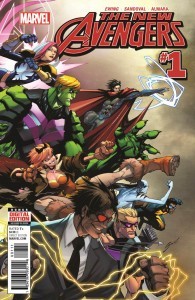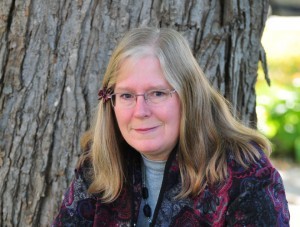Tansy Rayner Roberts's Blog, page 34
December 9, 2015
Writing Fast, and Furious, and 50,000 words
 Every year I tell myself I can’t/shouldn’t rely on the special NaNoWriMo magic to get my deadlines done. Because, you know, what are the odds that I’ll manage to write 50K words in a month every single year?
Every year I tell myself I can’t/shouldn’t rely on the special NaNoWriMo magic to get my deadlines done. Because, you know, what are the odds that I’ll manage to write 50K words in a month every single year?
And yet. Every year that I genuinely make the effort, it comes off well.
If I could do NaNo four times a year, I would. But I’ve tried the alternatives and really, it only works in November. Which is crazy, because November is a terrible time for writing. In Australia it’s the end of the university year, not the middle – I have an annual two week job that overlaps with NaNo. There are so many other things that tend to collide – this year it was the coverage of Jessica Jones for Tor.com. Next year it will be something else. In 2009 I’d just had a baby, it was crazy to even try…
But the secret it, it’s always a bad month for writing. I have kids, I have commitments, I have all manner of things that leap up and demand attention. My email inbox is enough to make anyone cry.
NaNoWriMo works for me, and it works mostly because of a combined magical cocktail of pressure and obligation. The words get written. They get written fast. And (here’s my own personal secret) they get written good.
I do my best writing when writing fast and furious. I can’t sustain the NaNo level of writing fiction – not without completely destroying my relationship with my children and partner, or the other important facets of my life. A good month of writing for me normally is 20K – a great month is 30K. 10K is keeping my head above water.
These metrics make no sense, of course, but writers often hold to them because without some kind of metric to prove progress, it’s easy to go spinning off into space without a safety harness.
My writing is at its best when it’s fast. I wrote more in the first half of this year than the second because I was writing Musketeer Space as an ongoing serial – my momentum was up, so letting the fingers fly across they keys released almost felt like NaNo levels of magic. Books I have written fast tend to need less editing at the other end. I don’t know how or why this works – it’s something that’s mostly true for me, except when it isn’t.
My Victorian fairy novel in progress, Flavia Wednesday, has suffered because I found out a year or two ago that it was a novel that simply could not be written fast. Whenever I tried, it broke. So I had to teach myself to write differently for that one – painstaking and thoughtful, one piece at a time. It’s still not finished, though it’s getting close. I struggled to build proper momentum on it, only to discover that it’s a novel that defies writing speed.
Normally, it takes me at least a month of working on a project to get up to a decent turn of “speed” and let the words take over. Writing the third book of my Creature Court trilogy was agonising because I had interruptions – usually edits for the middle book – every month or so, which meant it took me what felt like forever to reach the optimum cruising speed for getting it properly written.
Every book is different – and I can write well when writing slowly, but it takes more layers, more editing, more fixing.
My first drafts are cleaner when I’m writing a mile a minute. The writing days when I get my words done in an hour instead of in three, often have results I am happier with weeks or months later.
It’s frustrating as hell, to know this about myself, and not really understand it. It’s like that time that I got the best mark on an essay at college with the one I wrote in an hour while I had a cold.
Anyway, NaNoWriMo works for me because it forces me to hit that magical momentum point when a book falls out of my head in somewhat better shape than they usually emerge. The closest analogy I have is – it took me a long time to learn how to drive. It is one of the hardest things I ever did. I pushed way past my comfort zone to get there, I failed multiple times, and eventually I scraped my license.
Everyone told me that at some point, driving would be easy, and that seemed impossible, but these days I don’t even think about it, not really. I just drive. I’m pretty good at it. The stress of the task is mostly gone – stressful moments occur while driving, but the basic skills are there and invisible.
Writing is not easy. But sometimes it is. The benefit of something like NaNo is that it forces me to write even when it’s not easy. (If I did this all year around I’m pretty sure I would break something internal but it’s good for me to do this one month a year) The other benefit is that it sets me up to make the most of the days when it’s easy – and to write and write until the easy point arrives. (sometimes it doesn’t, hence internal breakages)
I wrote a lot of words this year – over 200K and counting – and some of them were good. Some of them took less time than others. I even finished some things – and I plan to finish at least one more thing before the end of the year. So I’m doing OK, I think.
December 8, 2015
12. Leigh Brackett & The Sword of Rhiannon [SF Women of the 20th Century]
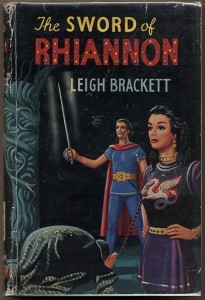 This week was Leigh Brackett’s 100th’s birthday which makes her a very appropriate SF Woman of the 20th Century to tackle. These days, Brackett (1915-1978) is mostly known to fandom for her screenplay for The Empire Strikes Back, the generally regarded “best” of the original Star Wars trilogy. Her screenwriting career (she also co-wrote The Big Sleep and wrote many other screenplays for Howard Hawkes among others) was tremendous, but she remained devoted to a far less prestigious form of writing – that of pulp science fiction.
This week was Leigh Brackett’s 100th’s birthday which makes her a very appropriate SF Woman of the 20th Century to tackle. These days, Brackett (1915-1978) is mostly known to fandom for her screenplay for The Empire Strikes Back, the generally regarded “best” of the original Star Wars trilogy. Her screenwriting career (she also co-wrote The Big Sleep and wrote many other screenplays for Howard Hawkes among others) was tremendous, but she remained devoted to a far less prestigious form of writing – that of pulp science fiction.
Like many women in the field (including Andre Norton, Marion Zimmer Bradley and Anne McCaffrey), Leigh Brackett often mashed up science fiction and fantasy traditions, which has been used as a convenient excuse over the years to dismiss or disregard her importance as a science fiction writer…
And then of course, the fun space opera/planetary romance that she loved became hugely vindicated with the success of the Star Wars films! While her contribution to Empire is often downplayed, several key concepts for the films came about because of Brackett and Lucas’ story meetings and her screenplay draft, including the idea that Luke Skywalker would have a twin sister who was also a Jedi (unlike Leia, the version Brackett pitched would actually have been trained fully in her powers separately to Luke).
Brackett’s favourite setting for fiction was Mars – a Burroughs-style, liveable magical kingdom version of Mars with old cities and canals – though she didn’t create a firm continuity between her many overlapping versions of the planet.
Her love of westerns, detective stories, and fantasy all infused her swashbuckling Martian (and occasionally Venusian) adventures – and as was common for most genre writing in the 1940’s and 50’s, her heroes were mostly always men.
Brackett’s very first short story publication was “Martian Quest” (1940) in Astounding Magazine. Her novella “Lorelai of the Red Mist” (1946) was co-written with Ray Bradbury – a younger writer who saw her as a mentor figure – because the job offer from Howard Hawkes for The Big Sleep made it impossible for her to write the second half in time for the deadline. Ironically, her co-writing credit with William Faulkner on The Big Sleep was earned in a similar way – he famously tore the book apart and had her write half the script, while he did the other, rather them working together.
The Sword of Rhiannon (Ace Books 1953) was originally published as the serialised “Sea-Kings of Mars,” and is one of her most successful/well-known books.
In Sword of Rhiannon, anti-hero archaeologist/tomb-raider Matthew Carse is flung back in time from a dry, dusty and crumbling version of Mars to a lush earlier period of plentiful oceans, barbarian sea-kings, pirates, a female warrior princess to conquer, and a war to win… armed with the bejewelled sword of a legendary, rebellious god.
Nicola Griffith, in her introduction to the Planet Stories Library edition of this SF classic, said that The Sword of Rhiannon was “a love song and eulogy to a planet…a hymn to the lost past of a Mars that never was.”
Brackett’s prose is lean, sharp and snarky, with far more character to it than I often expect from SF fiction of her era – and a lot more in common with Chandler and Hammett than Robert Howard. It’s amazing it was never adapted into a Harrison Ford movie.
It’s also quite jaw-droppingly epic, with her descriptive passages conveying as much if not more emotion than the interactions between characters. Also, there’s banter. Actual banter. Carse is exactly the kind of smart alec, morally-compromised hero with a dark side that Hollywood loves to present and then torment and beat up for 90 or more minutes. Why aren’t more screenwriters running to adapt the works of Brackett into films now that her landscapes are finally achievable? She’s practically done half the work for them.
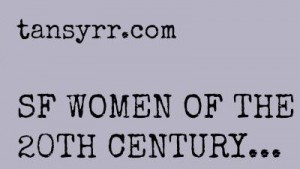 SF WOMEN OF THE 20TH CENTURY is brought to you by Tansy’s supporters at Patreon.
SF WOMEN OF THE 20TH CENTURY is brought to you by Tansy’s supporters at Patreon.
Patrons of the blog can earn great rewards and help the campaign reach exciting milestones to unlock more content.
1. Raccoona Sheldon & “The Screwfly Solution”
2. Diane Marchant & Kirk/Spock
3. Connie Willis & To Say Nothing of the Dog
4. Clare Winger Harris & “The Fate of the Poseidonia”
5. Octavia E. Butler & Dawn
6. Wendy Froud & Yoda
7. C.L. Moore & “No Woman Born”
8. Robin Klein & Halfway Across the Galaxy and Turn Left
9. Joanna Russ & To Write Like A Woman
10. Lois McMaster Bujold & Cordelia’s Honor
11. Naoko Takeuchi & Sailor Moon
December 6, 2015
Issue #1 – Totally Awesome Hulk
 Title: Totally Awesome Hulk #1
Title: Totally Awesome Hulk #1
Writer: Greg Pak
Artist: Frank Cho
The Buzz: A teenage Korean-American Hulk written and drawn by a Korean-American creative team! Amadeus Cho is a fun younger character who actually enjoys a) being a superhero and b) being a Hulk, which is already a fresh take on the old franchise. Check out this interview with Pak and Cho.
All You Need To Know: Amadeus Cho is a teen supergenius who started out as a sidekick to the Incredible Hercules and ended up tangled in all kinds of pantheon shenanigans, eventually replacing Hercules as the head of the Olympus Group, a corporation run by the Greek Gods. Yes, really. I don’t know how he became a Hulk. Shit happens, I guess.
Story: This is a fun ‘Hulk family’ book with appearances from She-Hulk and classic Bruce Banner, though the focus is very much on Amadeus and his sister Maddy who does field support for him via radio and is concerned that he’s not taking his hero business seriously enough. Plenty of banter and humour, this has to be one of the most likeable (non-She) Hulk titles I’ve come across before. As a comics reader who started with DC in the 90’s, I’m a big fan of second generation/legacy characters and this is a great example of that.
Art: Colourful, cheerful, with popping colours – plenty of sunshine to balance out the green, and really good character faces. I do love the current trend for comics books that aren’t ashamed of being comic books.
But What Did I Miss?: If you missed it, I probably did too – the Hulk is one of those areas of comics I’m very under-read on, mostly because I have little interest beyond a) She-Hulk and b) Mark Ruffalo. In any case, this is a solid Issue 1 that doesn’t assume you know much about who everyone is, and puts in the groundwork to establish the characters from scratch.
Would Read Issue 2?: It’s not shooting to the top of my list because there are so many great titles and lead characters to choose from right now (and I tend to gravitate towards the female protagonists first) but I’ll be saving this one for when my 6 year old (who adores the animated series Hulk and the Agents of SMASH) is at this reading level.
Read it if you Like: Hulk and the Agents of SMASH, She-Hulk, The Ray (particularly the Palmiotti/Gray mini-series from a few years back, but also the 90’s version), Blue Beetle (Jaime Reyes), The Flash (Wally West).
Previously reviewed this year:
Thor #1 (2014)
Spider-Woman #1 (2014)
All-New Captain America #1 (2014)
Captain America & the Mighty Avengers #1 (2014)
S.H.I.E.L.D. #1 (2014)
The Unbeatable Squirrel Girl #1 (2015)
Bitch Planet #1 (2014)
Secret Six #1 (2014)
Operation: S.I.N. #1
Spider-Gwen #1
Curb Stomp #1
Jem & the Holograms #1
Silk #1
Issue #1 – Convergence Special – Oracle, JLI, Batgirl
Issue #1 – Battleworld Special: Lady Kate, Ms America & Inferno
X-Men ’92 #1
Giant-Sized Little Marvels: AvX #1 (2015)
Runaways #1 (2015)
Loki, Agent of Asgard #1 (2014)
Fresh Romance #1
All-New Hawkeye #1
Black Canary #1
The Wicked and the Divine #1 (2014)
Bombshells #1
Captain Marvel & the Carol Corps #1
50 Years of SHIELD: Mockingbird #1
50 Years of SHIELD: (Don’t Call Her…) The Cavalry #1
50 Years of SHIELD: Quake #1
50 Years of SHIELD: Fury #1
50 Years of SHIELD: Agent Carter #1
New Avengers #1 (2015)
Issue #1 – New Avengers (2015)
Writer: Al Ewing
Artist: Gerardo Sandoval
The Buzz: Let’s be clear here, I’m only reading this because Wiccan and Hulkling are in it.
All You Need To Know: Roberto DaCosta, former New Mutant, has purchased a formerly evil organisation full of Science! And also an island. Some of the Marvel Universe’s young uns are on the AIM team, and also Hawkeye as the official SHIELD traitor spy. No, not the Hawkeye anyone actually wants on a team with Wiccan and Hulkling (sorry, Clint).
Secret Wars is over, the Marvel Universe is more confused than ever, and that’s all I’ve got.
Story: The team of the New Avengers includes my darling sweeties, Wiccan & Hulkling (most adorable teen gay couple in the Marvel Universe, not that you could really tell that from this issue), the usually hilarious Squirrel Girl, and classic Clint Barton Hawkeye. (The team also includes the next gen versions of White Tiger and Power Man, who previously appeared in the Mighty Avengers, but I didn’t stick with that title long enough to get the hang of them. And someone called Songbird) Apparently they’re going to do science and save the world from an exotic island base and that sort of thing, but this issue mostly consists of some erratic plane flying, shooting and a lot of earnest conversations, plus an attempt at banter.
HAWKEYE: SHIELD Agent Clint Barton reporting for Duty. I’m the super-secret traitor on your team. Sorry.
SUNSPOT: … could we get the other Hawkeye? I really wanted the other Hawkeye.
Any title which puts Wiccan and Hulkling in a ‘grown up’ Avengers team without them spending the entire issue geeking out massively and/or cuddling really doesn’t get those characters. I want to like this, as it has a diverse cast with a lot of potential for storytelling but I’m not sold so far, mostly because there’s nothing in this first issue to tell me who any of these people are – including the ones I already know.
Art: the characters come across as spiky and stylised in a way I find really jarring.
But What Did I Miss?: Apparently this makes more sense if you’ve read Avengers World #18, the Secret Wars edition. If you’ve read Hawkeye, Squirrel Girl, Mighty Avengers or Young Avengers ever, you probably care a lot more about many of the characters in this particular title than it has genuinely earned.
Would Read Issue 2?: I will, because I want this to be good and I miss Young Avengers so much, but this is no Young Avengers. That’s probably not its fault.
Read it if you Like: ugh, I don’t even know.
Previously reviewed this year:
Thor #1 (2014)
Spider-Woman #1 (2014)
All-New Captain America #1 (2014)
Captain America & the Mighty Avengers #1 (2014)
S.H.I.E.L.D. #1 (2014)
The Unbeatable Squirrel Girl #1 (2015)
Bitch Planet #1 (2014)
Secret Six #1 (2014)
Operation: S.I.N. #1
Spider-Gwen #1
Curb Stomp #1
Jem & the Holograms #1
Silk #1
Issue #1 – Convergence Special – Oracle, JLI, Batgirl
Issue #1 – Battleworld Special: Lady Kate, Ms America & Inferno
X-Men ’92 #1
Giant-Sized Little Marvels: AvX #1 (2015)
Runaways #1 (2015)
Loki, Agent of Asgard #1 (2014)
Fresh Romance #1
All-New Hawkeye #1
Black Canary #1
The Wicked and the Divine #1 (2014)
Bombshells #1
Captain Marvel & the Carol Corps #1
50 Years of SHIELD: Mockingbird #1
50 Years of SHIELD: (Don’t Call Her…) The Cavalry #1
50 Years of SHIELD: Quake #1
50 Years of SHIELD: Fury #1
50 Years of SHIELD: Agent Carter #1
December 3, 2015
Friday Links is Holding Out For A Hero
 It’s been all Jessica Jones all week for me!
It’s been all Jessica Jones all week for me!
Here are this week’s episode reviews, which cover Episodes 6-11:
Jessica Is Her Own Worst Enemy
Jessica Jones Wants You To Do The Hero Thing
Jessica Jones Takes Control (9-10)
Patsy’s Gonna Save You, Jessica Jones (11)
There’s been some other fantastic critical writing about Jessica Jones since the series dropped on Nov 20:
Jessica Jones is a Primer on Gaslighting, and How to Protect Yourself Against It (by Emily Asher-Perrin, at Tor.com)
Jessica Jones Was An Awesome Origin Story For One Of Marvel’s Oldest Heroes (on Patsy Walker/Hellcat, by James Whitbrook at i09)
What Rape Apologists need To Learn From Jessica Jones (by Natalie Zutter at Tor.com)
Yes, There Is A Kilgrave Fandom — And Here’s Why I’m Not Condemning It (by Maddy Myers at the Mary Sue)
Also this week I really liked this review of Supergirl, looking at the portrayal of female anger in the show, and touching on the important, ongoing commentary about gender roles (especially in the media) that has been continuing in this show, alongside the fun hijinks.
In the midst of all this commentary about the portrayal of gender issues, abuse and manipulation in fiction, it’s important to look at real life examples too: Men Look After Men: Sexism and Domestic Abuse In The Australian Comedy Community.
On Tumblr, I really appreciated this discussion about the female gaze, the Sherlock fandom, and why it is that women often see something completely different in stories than men do.
At Uncanny Magazine, I have a new essay up: The Alien Says Don’t Take Your Meds: Neurodiversity and Mental Health Treatment in TV SF/F.
November 26, 2015
Friday Links Has Feelings About Frankenstein
 Sady Doyle went off on a magnificent Twitter rant aimed at the director who thought the original Frankenstein novel was boring – she lays down some important lit crit and historical context about Mary Shelley and her sister Frances which is pretty damned epic.
Sady Doyle went off on a magnificent Twitter rant aimed at the director who thought the original Frankenstein novel was boring – she lays down some important lit crit and historical context about Mary Shelley and her sister Frances which is pretty damned epic.
I’ve been reviewing Jessica Jones episode by episode over at Tor.com – here are the posts so far:
Jessica Jones Does Not Respect Doors
Jessica Jones Can’t Have Nice Things
The Jessica Jones Paranoid Conspiracy Support Group
Speaking of Marvel and women, check out this great interview with Sana Amanat, director of content and character development at Marvel Comics, who has been working to create the change she wants to see in comics as far as female heroes and diversity is concerned.
The Mary Sue saved me a bunch of time this week by publishing We Don’t Need Supergirl or Jessica Jones. We Need Both.
Phoebe Robinson writes about How Daria Shaped a Generation of Women (Especially This Black Lady) and is therefore responsible for me ordering the complete box set for my kids for Christmas…
November 18, 2015
Peggy Carter Doesn’t Pull Her Punches
I’m busy writing my novel, so I don’t have time to write the essay burning a hole in my brain about all the mighty women on Superhero TV.
But the existence of Season 2 of Agent Carter makes me so, so happy.
November 16, 2015
Battening the Hatches for Jessica Jones
Jessica Jones is coming to Netflix on November 20th! I’m really excited about this. In preparation, I’ve been writing reread reviews of the original 4-trade Alias series (now available in a single hardcover volume) by Brian Michael Bendis, with art by Michael Gaydos, David Mack, Mark Bagley which introduces Jessica as the hardest, grumpiest noir detective scraping a living in a bright, technicolor superhero world.
Watch Jessica track down missing angsty teenagers, catfish straying husbands, and get taken in by a con man so dodgy, he even cons himself! See Jessica isolate herself from her super-friends, her family, and her former life. Marvel as Jessica saves the public face of Captain America, beats J. Jonah Jameson at his own game, teams up with Spider-Woman and hooks up with both Luke Cage and Ant-Man! (the hot Ant-Man, not the original Ant-Man) Witness Jessica come to terms with her past, present and future as she comes face to face with her nemesis, the sinister mind-controlling Purple Man. Also, listen to Jessica swear a lot. Like, a lot.
Here are the posts:
Jessica Jones: The Alias Re-read Part 1
The Alias Re-read Part 2: Come Home
The Alias Re-Read Part 3: The Underneath
The Alias Re-Read Part 4: The Secret Origins of Jessica Jones
Jessica Jones is My Hero – a personal essay about Jessica’s post-Alias appearances in the Marvel Comics Universe, her essential connection to the Civil War storyline, and her portrayal as a wife and mother. Revised for republication on Tor.com.
November 10, 2015
11. Naoko Takeuchi & Sailor Moon [SF Women of the 20th Century]
 Naoko Takeuchi is a Japanese manga artist and writer. She has a degree in chemistry, and qualified as a pharmacist before submitting her work to manga publishers. Her early work was mostly romance-based, but she wanted to create a manga about female warriors and outer space – and her editor Osano Fumio suggested she put the girls in sailor suits (similar to the uniform Takeuchi had worn at high school).
Naoko Takeuchi is a Japanese manga artist and writer. She has a degree in chemistry, and qualified as a pharmacist before submitting her work to manga publishers. Her early work was mostly romance-based, but she wanted to create a manga about female warriors and outer space – and her editor Osano Fumio suggested she put the girls in sailor suits (similar to the uniform Takeuchi had worn at high school).
After testing out the concept with a one-shot manga called Codename: Sailor V (which later become a popular serial in its own right), Takeuchi developed her idea into the science fantasy manga serial Sailor Moon, also known as Pretty Soldier Sailor Moon, depending on the translation.
This hugely successful sh?jo (aimed at teen girl readers) manga fused two popular genres: Magical Girl, and Sentai/Superhero Squad. Sailor Moon ran for 52 chapters between 1991-1997, and followed the adventures of Usagi, a teenage superhero who takes on the powers of Sailor Moon thanks to a talking cat, magical jewellery, and destiny. She is surrounded by her team, each of whom has their own magical super identity based on a planet (Sailors Mars, Mercury, Venus, Saturn, Jupiter, Neptune Uranus and Pluto, because Pluto is totally a planet).
 Sailor Moon mashed up science fiction, fantasy and mythological tropes, including astronomy, astrology, Geology, legends of ancient Japan, Greece and Rome, planetary romance, monster-of-the week, Arthuriana, time travel, alternate universes, and interplanetary battles. The success of the manga and the anime adaptation (which ran from 1992-1997, concurrent with the original books) served to boost the popularity of Japanese manga/anime art and stories in the West. However, the English translations left out a lot of Sailor Moon’s more subversive and interesting aspects, including the lesbian romance between Sailors Uranus and Neptune (who became cousins in the versions printed and screened in the US), and other queer/trans storylines.
Sailor Moon mashed up science fiction, fantasy and mythological tropes, including astronomy, astrology, Geology, legends of ancient Japan, Greece and Rome, planetary romance, monster-of-the week, Arthuriana, time travel, alternate universes, and interplanetary battles. The success of the manga and the anime adaptation (which ran from 1992-1997, concurrent with the original books) served to boost the popularity of Japanese manga/anime art and stories in the West. However, the English translations left out a lot of Sailor Moon’s more subversive and interesting aspects, including the lesbian romance between Sailors Uranus and Neptune (who became cousins in the versions printed and screened in the US), and other queer/trans storylines.
Naoko Takeuchi herself rarely gives interviews, though when she does she is very gracious to her fans and grateful for (if a little bemused by) the longevity of her story’s legacy.
Osano Fumio, longtime editor of Sailor Moon, has been more forthcoming – one recent interview had him sharing the story of Takeuchi’s experimental art style, in which she not only used unusual colours, but also techniques such as collage, attaching beads and lace to her work, much to his anguish:
Osano: It was an extremely troublesome original manga for us (laughs). Which is to say, and this becomes a specialized discussion, but you can’t print illustrations with 3D objects attached with regular offset printing. You need to take a picture of the illustration, then print it using a manufacturing process where you circulate that photo in the printing press, so it’s an illustration that makes editors and print shops cry. On top of that, there’s the possibility that beads, etc will come plopping off when moving it, so it’s a pain to handle. Therefore, I pleaded “Please refrain from attaching 3D objects” with Mrs. Takeuchi several times, but she didn’t care (laughs). However, looking at it after several decades, each drawing is incredibly wonderful… Those illustrations made me cry at that time, but thinking back on it, I definitely feel that she was right.
Takeuchi often did not get her own way, hampered in her creativity by what was considered appropriate for the market – she originally wanted a pastel palette, and was firmly steered away from this. She wanted Usagi’s Sailor Moon identity to have silver hair instead of blonde, and was dissuaded because of the ‘grandma’ association with grey hair. Most notably, she longed to kill off her characters at the end of the series, and was talked off that ledge too, on the grounds that sh?jo had to have happy, fluffy endings. In the anime, the Sailor Guardians are killed in their final battle, but return to life, leading Takeuchi to complain that she hadn’t been able to do even that in the manga.
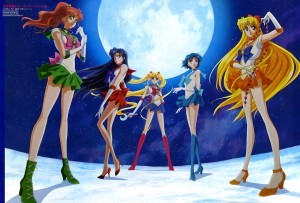 Sailor Moon is credited for its powerful influence on manga and anime culture, notably for reinvigorating the magical girl genre in the 90’s by showing how action and dynamic heroines could be a sympathetic combination with tales of romance and fantasy. In the West, it is credited with the popular influence of anime-style artwork, and also with a growing female readership of comics generally, and manga in particular – notably, the series was to be found in bookshops, not just comic shops, and led the way in making Japanese-style comics accessible to general readers.
Sailor Moon is credited for its powerful influence on manga and anime culture, notably for reinvigorating the magical girl genre in the 90’s by showing how action and dynamic heroines could be a sympathetic combination with tales of romance and fantasy. In the West, it is credited with the popular influence of anime-style artwork, and also with a growing female readership of comics generally, and manga in particular – notably, the series was to be found in bookshops, not just comic shops, and led the way in making Japanese-style comics accessible to general readers.
While Sailor Moon’s feminism is often of the cutesy, Spice Girls/Girl Power variety, its hyper-feminine traits often made it more accessible to young women and girls than other, more traditional super hero stories. It’s important that Sailor Moon is as much about friendship, cute clothes and having fun as it is about fighting evil, saving the world, and so on. (It feels counter-intuitive but it is important to have stories that say you can be a soldier and be mega-girlie at the same time, because so often, fictional women are only allowed to fight or be powerful if they display traditionally masculine interests, while looking casually hot)
Even in the continuing genre of sh?jo and its Western equivalent, YA fiction, stories that are so completely about women and girls are rare, especially when those stories come with science fiction trappings. In the 1990’s, when Sailor Moon was powering its way across the world as a manga and as a cartoon, it was simply groundbreaking.
 SF WOMEN OF THE 20TH CENTURY is brought to you by Tansy’s supporters at Patreon.
SF WOMEN OF THE 20TH CENTURY is brought to you by Tansy’s supporters at Patreon.
Patrons of the blog can earn great rewards and help the campaign reach exciting milestones to unlock more content.
1. Raccoona Sheldon & “The Screwfly Solution”
2. Diane Marchant & Kirk/Spock
3. Connie Willis & To Say Nothing of the Dog
4. Clare Winger Harris & “The Fate of the Poseidonia”
5. Octavia E. Butler & Dawn
6. Wendy Froud & Yoda
7. C.L. Moore & “No Woman Born”
8. Robin Klein & Halfway Across the Galaxy and Turn Left
9. Joanna Russ & To Write Like A Woman
10. Lois McMaster Bujold & Cordelia’s Honor
November 3, 2015
10. Lois McMaster Bujold & Cordelia’s Honor [SF Women of the 20th Century]
 Lois McMaster Bujold is one of the most popular and celebrated SF writers still working today. She has won the Hugo for Best Novel four times, an achievement only equalled by Robert Heinlein. While she has published excellent fantasy fiction in recent years, it is her epic space opera series based on the Vorkosigan family for which she is best known.
Lois McMaster Bujold is one of the most popular and celebrated SF writers still working today. She has won the Hugo for Best Novel four times, an achievement only equalled by Robert Heinlein. While she has published excellent fantasy fiction in recent years, it is her epic space opera series based on the Vorkosigan family for which she is best known.
The secret to the Vorkosigan novels is, you don’t have to read them in the right order. I started A Civil Campaign, when it was the most recent, and meandered all over the place in catching up with the characters, based on which books I could source at the time – it was the early 00’s, and Bujold still wasn’t widely distributed in Australia, so my collection included imported paperbacks, library copies and Fictionwise. Remember Fictionwise? Remember mobipocket?
Then I discovered that Bujold herself had written all of the books in the wrong order. It wasn’t just me! For instance, when I read the first two books of the series, Shards of Honor and Barrayar, as the ‘Cordelia’s Honor’ omnibus, I assumed those two books were published close together.
In fact, the first Vorkosigan novel that Bujold sold was The Warrior’s Apprentice, chronologically the first story with (young adult, academy graduate) Miles as a protagonist. It was released in 1986, the same year as Shards of Honor, which tells how Miles’ parents got together, from the POV of his mother Cordelia.
Most of the Vorkosigan novels revolve around Miles. He’s a fascinating protagonist, allowing us to explore a space opera universe through the eyes of a character who is constantly at odds with the bullshit macho culture of his own planet and the entire space opera genre because of his disabilities, and the cross-cultural influences on his childhood. He’s a manic genius pixie dream boy, and I love him to bits…
But Cordelia Naismith is my hero. This post is particularly timely because the hero of Shards of Honor and Barrayar is the protagonist in the next Bujold novel (released early 2016), after 25 years old of ceding the spotlight to Miles, Ekaterin and Ivan.
Shards of Honor (1986) is a war story and an interplanetary romance between Captain Cordelia Naismith (of Beta Colony, a planet that considers itself all about equality, sexual liberation and science), and Lord Aral Vorkosigan (of Barrayar, a planet that has managed to hang on to feudalism and advanced sexist codswallop in the face of every science fictional temptation).
“When I started off writing Shards of Honor,” Bujold said of her famous series, “I really wasn’t out to write military SF at all. I was writing a Gothic romance in SF drag… they ended up with this space war more or less to give their characters something to do.”
Cordelia was my favourite – pragmatic, competent Cordelia, forced to team up with a man who represents everything alien and awful to her own people, for the sake of survival. One of the most powerful aspects of the book I remember is not so much the epic love story (though I do like nothing better than romance that emerges from two people who are unexpectedly great at teamwork, it is the best trope of all time) but a scene towards the end, when Cordelia defends her ally to a Betan psychologist who refuses to believe her attachment to (and respect for) Aral is anything other than the space equivalent of Stockholm Syndrome, or possibly some form of psychological tampering.
I loved that it wasn’t so simple as ‘culture that’s all liberal and forward-thinking vs culture that’s sexist and old-fashioned,’ because the Betans are just as close-minded (and grounded in a sense of their own superiority) as the Barrayarrans. I understood entirely why Cordelia rebelled against her own culture to follow Aral, despite all the many reasons why she might (and would) butt heads against his retrograde peers. She didn’t run towards the planet that would force her to wear long dresses for the rest of her natural life; she ran towards the one person who respected her for herself, while running away from a society that had let her down badly.
(Aral Vorkosigan is the thinking man’s Steve Trevor: product of a male-dominated society, whose head is completely turned by idea of a woman who equals and eclipses him in many ways. He often refers to her as his ‘Captain’ long after they are married. He’s also bisexual, about which he and his future wife have intelligent, open-hearted communication)
Shards (1986) was originally written as part of a larger manuscript, later reunited with the second part of the story, Barrayar, in the Cordelia’s Honor (1999) omnibus. Barrayar (1991) benefits from having been laid aside while Bujold developed the first arc of Miles’ story in several novels and short stories – the characters from Shards are more polished here and they form part of an ensemble which I adore greatly (oh Kou and Drou, I ship you forever).
Most romances don’t follow up with a sequel about the social ramifications of your romance once it’s been consummated – although actually that’s not true at all, many historical romances I’ve read in recent years get the marriage and/or consummation over with halfway through and get on with what happens *next*.
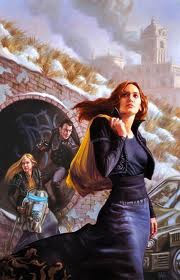 In any case, Barrayar is the book in which Cordelia consolidates her general awesomeness. Every Bujold fan knows what “went shopping” means, when you discuss Barrayar. It’s also the book in which Cordelia deals with her slow burning culture shock about the retrograde society in which she has chosen to live, and how her presence as a former enemy of war will make her and her new family very vulnerable.
In any case, Barrayar is the book in which Cordelia consolidates her general awesomeness. Every Bujold fan knows what “went shopping” means, when you discuss Barrayar. It’s also the book in which Cordelia deals with her slow burning culture shock about the retrograde society in which she has chosen to live, and how her presence as a former enemy of war will make her and her new family very vulnerable.
If you read the Vorkosigan novels in publication order, then you already know that Cordelia’s baby will survive, though at a terrible cost – Miles will struggle with health and fitness issues for most of his life, until he is able to have surgery to replace his brittle bones etc.
The uterine replicator is a central piece of technology in the Vorkosigan saga, and one of the main reasons that I get cranky at people suggesting that these books are not hard science fiction. This one piece of technology has a massive effect, no only on Cordelia’s family (and Miles’ survival) but as a representation of the beginning of galactic technology bleeding into the culture of Barrayar.
And, of course, it’s a technology that we are closer to today than we were when these books were first created; the survival rates of premature babies are extremely high compared to ten or twenty years ago, and I don’t know any female science fiction reader who has not thought about Bujold while pregnant or discussing pregnancy. (Never mind your flying cars, where’s my fucking uterine replicator?)
The uterine replicators arrive in this story as a stark reminder of the universal traditions of war – Barrayar unexpectedly becomes host to a collection of developing fetuses from raped Betan soldiers, who have chosen to remove those fetuses and donate them to “their fathers”. This is a startlingly original (if brutal) idea. It addresses the topic of rape as a weapon of war in a way that explores social and personal responsibility, via a technological advancement, as well as working against the expectation of gender roles in unwilling pregnancies.
It’s also a cleverly seeded detail that pays off later, when the attack on Cordelia puts her own gestating baby at risk… Miles only survives because those replicators are available. (and a generation later, in Diplomatic Immunity, he will use that technology to build his own family)
Bujold’s space opera novels are often characterised as light – indeed, they are fast, fun reads, but they always have a layer of conscience and thoughtful philosophy alongside the banter and squishy, adorable characters. They are never not about technology or the other trappings of science fiction – while exploring the effect that change in technology has (and sometimes, pointedly, does not have) on the people who encounter that change.
 SF WOMEN OF THE 20TH CENTURY is brought to you by Tansy’s supporters at Patreon.
SF WOMEN OF THE 20TH CENTURY is brought to you by Tansy’s supporters at Patreon.
Patrons of the blog can earn great rewards and help the campaign reach exciting milestones to unlock more content.
1. Raccoona Sheldon & “The Screwfly Solution”
2. Diane Marchant & Kirk/Spock
3. Connie Willis & To Say Nothing of the Dog
4. Clare Winger Harris & “The Fate of the Poseidonia”
5. Octavia E. Butler & Dawn
6. Wendy Froud & Yoda
7. C.L. Moore & “No Woman Born”
8. Robin Klein & Halfway Across the Galaxy and Turn Left
9. Joanna Russ & To Write Like A Woman

